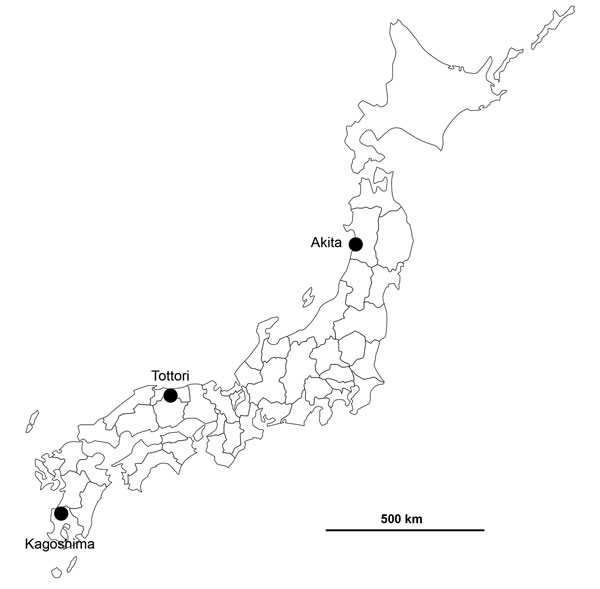Volume 23, Number 4—April 2017
Dispatch
Characterization of Highly Pathogenic Avian Influenza Virus A(H5N6), Japan, November 2016
Figure 1

Figure 1. Locations of confirmed highly pathogenic avian influenza virus A(H5N6) infections in Akita, Tottori, and Kagoshima Prefectures, Japan, 2016.
1These authors contributed equally to this article.
Page created: March 17, 2017
Page updated: March 17, 2017
Page reviewed: March 17, 2017
The conclusions, findings, and opinions expressed by authors contributing to this journal do not necessarily reflect the official position of the U.S. Department of Health and Human Services, the Public Health Service, the Centers for Disease Control and Prevention, or the authors' affiliated institutions. Use of trade names is for identification only and does not imply endorsement by any of the groups named above.